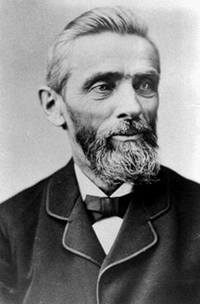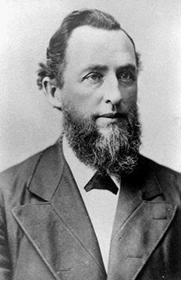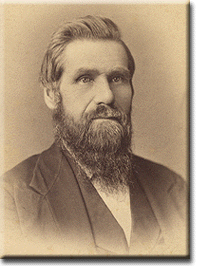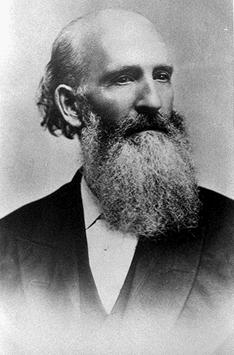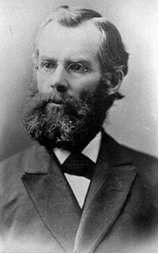
In 1867 he became the third president of the General Conference. He was an editor of the Review and Herald. On September 15, 1874, with his children Charles and Mary (his wife had died March 18, 1872), he sailed for Switzerland. There he organized the converts and began to publish material on world events, prophecy, Bible doctrines, health, and temperance.
As a theologian Andrews made significant contributions to the development of various doctrines of the SDA denomination. Andrews’ extensive writings on the subject of the seventh-day Sabbath in history were published in a book entitled History of the Sabbath and the First Day of the Week.
Andrews was also active helping in the development of church organization. He was chairman of a three-man committee to suggest a plan of organization for the denominational publishing house, also chairman of a committee to draft a constitution and bylaws for the central organization of the church. during the Civil War, Andrews represented the church in Washington, D.C., to explain why SDA’s believe that participation in combat is contrary to Christian principles, with the result that SDA draftees could apply for noncombatant service.
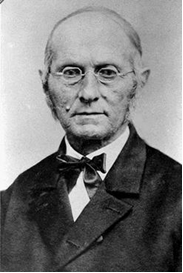
Joseph Bates had a faithful and devoted wife by the name of Prudence Nye. They got married in 1818, and was a road they took together for 52 years. They had three girls and one boy.
Bates was converted in solitude on board his ship through fears and spiritual struggles. Bates became reformed from evil habits of drinking, smoking, and swearing and soon became a model of health reform and spiritual power for the cause that was so dear to his heart. His wife played a part in helping him spiritually by placing a Bible and devotional books in his luggage for him to take on his voyages. He later joined her church, Christian Connection when he came to land before his last voyage.
In 1839, he accepted the Second Advent preaching of William Miller and became an active successful Mille rite preacher. He eventually invested all his money in the Advent Movement. Bates experienced the 1844 disappointment without losing faith. He read Thomas M. Preble tract on the Sabbath and the next year he wrote a tract called “The Seventh- day Sabbath- a perpetual sign” published in 1846. The newly weds Ellen and James White read it and accepted the Sabbath message.
Bates was often the chairmen of “Sabbath Conferences” of 1848- 1850. He was closely associated with the Whites. He died at the age of eighty at the Health Reform Institute in Battle Creek at was buried at Monterey, Michigan. He wrote The Seventh Day Sabbath, a Perpetual Sign.[3] and contributed to early publications such as A Word to the "Little Flock."
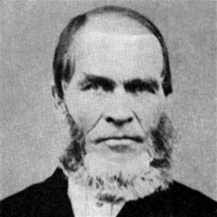
(1806–1882) was a pioneer of the Seventh-day Adventist Church, known for introducing the investigative judgment doctrine to the church. Hiram Edson was the instrument whom God used to reveal to the early Sabbath-keeping Adventists the meaning of the cleansing of the sanctuary. With Bates and White, he was one of the deep-thinking students who developed the Seventh-day Adventist faith, a self-sacrificing servant of God, an ardent evangelist, and faithful all of his long life on his devotion to Christ. He was at one time a Methodist.
In the 1840’s he lived on a farm near Port Gibson, New York, a little town on the Erie Canal almost midway between Albany and Buffalo. A small company of Adventist believers mostly farmers, lived in this area, and they looked to Edson as their leader. His farm was about a mile south of town. At that place the Adventists gathered on October 22, 1844 to await the coming of the King. But Christ did not come as they expected.
The following day in answer to their prayers for light, God opened to Edson - as if in a vision - a scene of wonderment; Christ, our High Priest, entering into the Most Holy place of the Heavenly Sanctuary to begin a special work of judgment prior to His return. Edson shared this light with his friends, Owen Crosier and Dr. F. B. Hahn of nearby Canandaigua. They determined to study the sanctuary and its cleansing from the Biblical viewpoint. The results of their research appeared in their little advent paper published in Canandaigua, the Day Dawn. Later also in the Day Star, Cincinnati. From this point on, light came to the disappointed Adventists and the “why” of their pain and disappointment began to dawn upon them.
It was Edson who advanced funds to purchase the first Seventh-day Adventist press. It was at Edson’s home in Port Gibson that the third Sabbath Conference of 1848 was held. Edson sold his farm, turned to preaching and became a successful evangelist. In his later life he labored near Roosevelt, New York. For years he was leader of our work there. He lies buried in the Roosevelt cemetery.
In the 1840’s he lived on a farm near Port Gibson, New York, a little town on the Erie Canal almost midway between Albany and Buffalo. A small company of Adventist believers mostly farmers, lived in this area, and they looked to Edson as their leader. His farm was about a mile south of town. At that place the Adventists gathered on October 22, 1844 to await the coming of the King. But Christ did not come as they expected.
The following day in answer to their prayers for light, God opened to Edson - as if in a vision - a scene of wonderment; Christ, our High Priest, entering into the Most Holy place of the Heavenly Sanctuary to begin a special work of judgment prior to His return. Edson shared this light with his friends, Owen Crosier and Dr. F. B. Hahn of nearby Canandaigua. They determined to study the sanctuary and its cleansing from the Biblical viewpoint. The results of their research appeared in their little advent paper published in Canandaigua, the Day Dawn. Later also in the Day Star, Cincinnati. From this point on, light came to the disappointed Adventists and the “why” of their pain and disappointment began to dawn upon them.
It was Edson who advanced funds to purchase the first Seventh-day Adventist press. It was at Edson’s home in Port Gibson that the third Sabbath Conference of 1848 was held. Edson sold his farm, turned to preaching and became a successful evangelist. In his later life he labored near Roosevelt, New York. For years he was leader of our work there. He lies buried in the Roosevelt cemetery.

